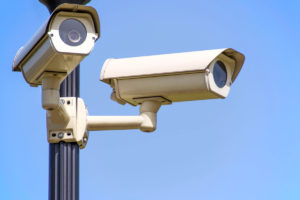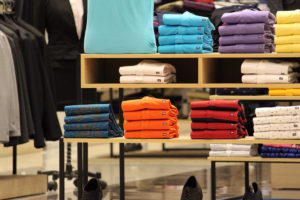 For a loss prevention officer, the holiday season is a hard time to be jolly when the busiest shopping season of the year brings with it its shoplifters, crime, and theft. During the holiday season, the number of incidents involving shoplifting increases considerably, and the losses the store suffers can be devastating to their bottom line.
For a loss prevention officer, the holiday season is a hard time to be jolly when the busiest shopping season of the year brings with it its shoplifters, crime, and theft. During the holiday season, the number of incidents involving shoplifting increases considerably, and the losses the store suffers can be devastating to their bottom line.
For any retail store in the United States and across the globe, having a loss prevention system in place or a loss prevention officer in their store can be the difference between having profits or losses during their fiscal year.
According to recent studies, more than half of retail stores in the United States have stopped investing in their loss prevention teams or systems even though their inventory shrink rate has seen an increase in the last year. The inventory shrink rate takes into consideration the following:
- Shoplifting
- Employee theft
- Vendor fraud
- Administrative and paperwork errors
Shoplifting theft accounts for almost 40% of the total theft a store experiences, and even though the amount an employee steals can surpass that of the common shoplifter each instance it happens, the shoplifting theft can be considerable every year.
According to many pieces of research, retail stores lose approximately $35 million a day due to shoplifting or $48.9 billion in a year. Those detrimental statistics in the retail industry are worth considering when many stores and businesses decide whether to invest in a loss prevention system or a loss prevention team to combat the shoplifting in their store.
A loss prevention system expense can be recovered within a short period of time, and if your losses are increasing each year, the time you will recoup the money invested in the system shortens considerably.
The introduction of a loss prevention system in the store allows your employees to dedicate more time with the customers entering your store, than attempting to catch the shoplifter. The system also allows your store to be protected and send a message to the shoplifters. Shoplifters know where and which stores to target. If you are a store that doesn’t prosecute shoplifters or doesn’t have a loss prevention team or system, you are vulnerable and can become the target store for many of these shoplifters.
 For the retail industry and small businesses in general, the holiday season has started, and for them, this season can be a financial boost for their business.
For the retail industry and small businesses in general, the holiday season has started, and for them, this season can be a financial boost for their business. Now that fall is upon us it is getting darker earlier. These hours of darkness can bring unique challenges for retail owners. Have you ever considered that it is your responsibility to help keep customers and employees remain safe while they are on your property? It may make sense that you are responsible for employee safety but you are also obliged to help keep customers safe as well. This includes your parking lot and the exterior areas around the building. How do you do this? What do you have to protect against? Good questions and hopefully we can provide you with answers to those questions and suggestions to make your business safer.
Now that fall is upon us it is getting darker earlier. These hours of darkness can bring unique challenges for retail owners. Have you ever considered that it is your responsibility to help keep customers and employees remain safe while they are on your property? It may make sense that you are responsible for employee safety but you are also obliged to help keep customers safe as well. This includes your parking lot and the exterior areas around the building. How do you do this? What do you have to protect against? Good questions and hopefully we can provide you with answers to those questions and suggestions to make your business safer. For a small business owner, bringing sales to their business is not an easy feat.
For a small business owner, bringing sales to their business is not an easy feat. With Thanksgiving right around the corner, I thought it would be an appropriate time for me to ask the employers out there how thankful are you for the staff you have? I don’t mean are you just thankful you have people who work for you in a general sense but how thankful are you for what they bring to the workplace every day? Maybe you have never thought about it like that. I’m certain you are thankful that Bobby showed up on time today or Mary Jane rang up customers without a customer complaint. But have you ever looked at how you express your thanks to your team? Maybe your attitude is that you pay them and that should be enough. Perhaps you give your employees a birthday card when their birthday rolls around each year. But is that really sufficient? Is it fair for your employees to expect more from you in terms of recognition?
With Thanksgiving right around the corner, I thought it would be an appropriate time for me to ask the employers out there how thankful are you for the staff you have? I don’t mean are you just thankful you have people who work for you in a general sense but how thankful are you for what they bring to the workplace every day? Maybe you have never thought about it like that. I’m certain you are thankful that Bobby showed up on time today or Mary Jane rang up customers without a customer complaint. But have you ever looked at how you express your thanks to your team? Maybe your attitude is that you pay them and that should be enough. Perhaps you give your employees a birthday card when their birthday rolls around each year. But is that really sufficient? Is it fair for your employees to expect more from you in terms of recognition? Retail shelving along with store design has a huge impact on shoplifting losses. Typically a shoplifter likes and needs privacy even if only for a moment. So why not keep that in mind when designing or remodeling your store. Your shelving and isles can work for you by simply considering several factors.
Retail shelving along with store design has a huge impact on shoplifting losses. Typically a shoplifter likes and needs privacy even if only for a moment. So why not keep that in mind when designing or remodeling your store. Your shelving and isles can work for you by simply considering several factors. Growing up did you ever do something dumb and your mom or your dad would ask you, “What were you thinking?” Having lived in south for the past 32 years I have learned of the local colloquialism when someone does something stupid, “Didn’t your momma teach you better?” Unfortunately, as a young boy I did a lot of dumb things making me wonder if my brain developed a lot later in life than most people. For example, I had a propensity for walking behind batters warming up to go to the plate for my father’s teen baseball teams. I ended up with more than one fat lip from my stupidity…obviously not learning the lesson the first time. I had a fascination with electrical outlets and wires and old rotary dial telephones…I won’t go into details but no they didn’t work when the wires were pushed into the outlet, I was not injured but I had one very busy guardian angel.
Growing up did you ever do something dumb and your mom or your dad would ask you, “What were you thinking?” Having lived in south for the past 32 years I have learned of the local colloquialism when someone does something stupid, “Didn’t your momma teach you better?” Unfortunately, as a young boy I did a lot of dumb things making me wonder if my brain developed a lot later in life than most people. For example, I had a propensity for walking behind batters warming up to go to the plate for my father’s teen baseball teams. I ended up with more than one fat lip from my stupidity…obviously not learning the lesson the first time. I had a fascination with electrical outlets and wires and old rotary dial telephones…I won’t go into details but no they didn’t work when the wires were pushed into the outlet, I was not injured but I had one very busy guardian angel.
